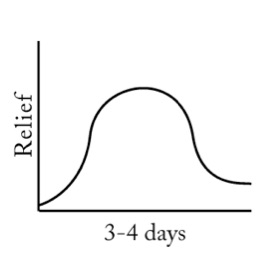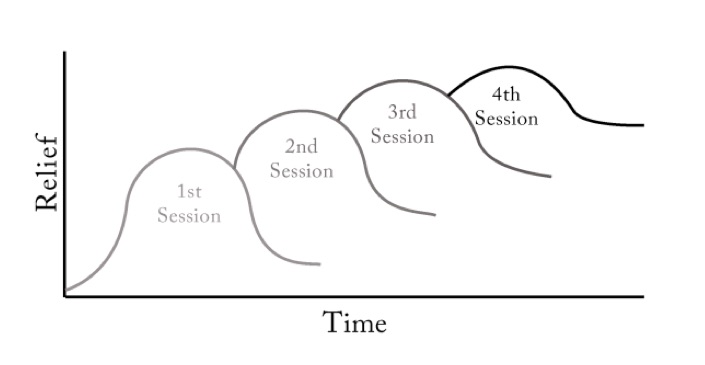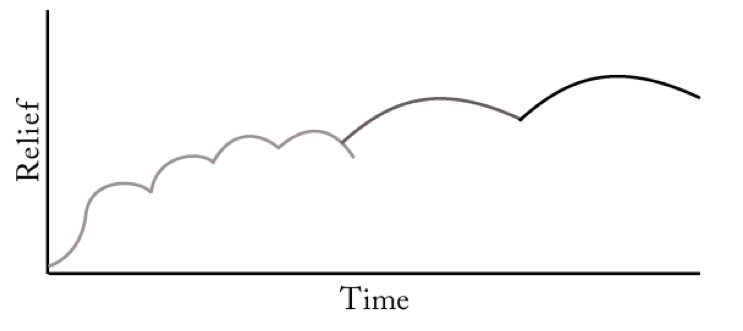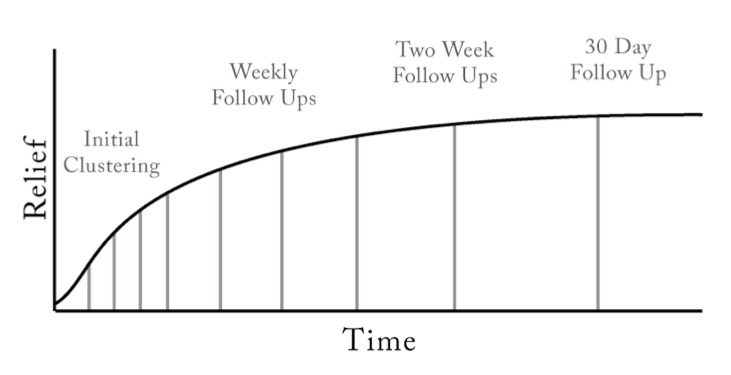Acupuncture has been in continual use as a powerfully effective form of healthcare for at least 3,000 years.
Some estimates date Acupuncture’s origins to be over 5,000 years old. At least a third of the world uses it as healthcare.
Acupuncture is simple, and powerful. It helps the body to return to balance. The Chinese discovered, long ago, a series of pathways and acupuncture points that have an influence over the functions of other parts of not just the body, but also the sense of mental and emotional well being. By using extremely fine, disposable, stainless steel needles, placed into carefully selected acupuncture points, the acupuncturist coaxes subtle changes in the body. This brings about changes in body function, and encourages the body toward homeostatic balance. Many things begin to change as a result of acupuncture therapy: patients begin to sleep better, experience less pain and stress in daily life, moods begin to become more predictable and balanced, addictive behaviors begin to lose their grip, overall body function improves: digestion, breathing, elimination, circulation, menstrual cycles…all begin to normalize. Out of these subtle changes, the body’s ability to heal itself is restored, and enhanced, and THAT is why acupuncture works so well.
The results are usually immediate. Sometimes pain that had been present for many years is suddenly gone. Often it is progressive…meaning that after several treatments, the pain has gotten better each time and gradually goes away, or at least loses its grip over someone’s life.
Learn more, check out this free downloadable book, “Why Did You Put That Needle There?” by Manchester Community Acupuncture’s Andy Wegman.

How often should you be scheduling your acupuncture treatments?
Strategic Scheduling: Acupuncture as a Process
Any natural, sustainable method to improve the body works best with steady progress over time. You wouldn’t go to the gym once and expect a lasting miracle. Or take a martial arts class sporadically a few times a year and expect to master the art. Acupuncture is no different. One treatment can do a lot. I’ve seen one acupuncture treatment create life changing effects on many occasions. If the effects are to last, though, it’s best to schedule a series of sessions in a strategic way.
Taking most orthopedic (pain) cases as an example, the effects of one acupuncture treatment tend to look something like this:

After the treatment there may be a bit of soreness that subsides and gives way to a wave of relief. This relief usually lasts 3-4 days before the pain starts to creep back, though it might be at a more tolerable intensity. Strategic scheduling requires anticipating this, and being ready with another appointment 3-4 days from the first. Letting the treatments build on each other in this way is the most effective method for quickly creating lasting changes.

This might entail 4-6 visits over the first two weeks. It sounds like a lot, but, it’s building a foundation, so that the subsequent visits can be further spaced out. As the initial complaint fades away, treatments can be scheduled further apart, maybe once a week, or once every ten days depending on the progress. Here is an overview of the progress curve:
There is no one-size-fits-all treatment plan, but it’s beneficial if you understand that there is a process underway. Acupuncturists usually recommend anywhere from 6-12 treatments for most complaints. Sometimes it only takes 2-3. Sometimes difficult, chronic, conditions need extended care. For best results, be ready to commit to a series of sessions.
This is acupuncture in a perfect world. Of course, there are logistical and financial variables. This is a conversation that must be had with your acupuncturist. In my office, I do everything I can to help create a process that will be most effective, while still realistic.

After the treatment there may be a bit of soreness that subsides and gives way to a wave of relief. This relief usually lasts 3-4 days before the pain starts to creep back, though it might be at a more tolerable intensity. Strategic scheduling requires anticipating this, and being ready with another appointment 3-4 days from the first. Letting the treatments build on each other in this way is the most effective method for quickly creating lasting changes.
This might entail 4-6 visits over the first two weeks. It sounds like a lot, but, it’s building a foundation, so that the subsequent visits can be further spaced out. As the initial complaint fades away, treatments can be scheduled further apart, maybe once a week, or once every ten days depending on the progress. Here is an overview of the progress curve:

